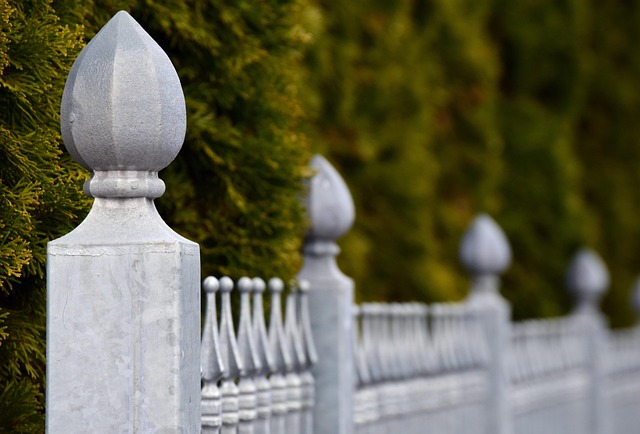Coastal areas present unique challenges for fencing due to harsh weather conditions and saltwater exposure. This article explores durable wooden fencing as a robust solution for these environments. We delve into understanding the coastal landscape’s specific demands, highlighting the benefits of wood fences in enhancing property boundaries while withstanding salt air and frequent storms. By examining material choices, installation methods, and maintenance strategies, homeowners and builders can ensure long-lasting, aesthetically pleasing coastal fences.
- Understanding Coastal Environment Challenges
- Benefits of Durable Wooden Fencing
- Material Selection for Saltwater Resistance
- Installation Techniques for Coastlines
- Maintenance Tips for Longevity
Understanding Coastal Environment Challenges
The coastal environment presents unique challenges when it comes to fencing due to factors like harsh weather conditions, salt air, and frequent moisture. These elements can significantly impact the durability and longevity of traditional fencing materials. Understanding these challenges is the first step towards selecting an appropriate solution for durable wooden fencing in such areas.
Saltwater, wind, and fluctuating temperatures contribute to wood decay, making it essential to choose rot-resistant varieties and employ protective treatments. Additionally, the landscape along coasts often includes soft sand or rocky terrain, requiring fences to withstand constant erosion and potential storm surges. Proper installation techniques, including deep anchoring and drainage systems, are crucial to ensuring the fence’s stability and longevity in this demanding environment.
Benefits of Durable Wooden Fencing
Durable wooden fencing offers an array of benefits for coastal areas. Firstly, it provides natural protection against harsh weather conditions, including strong winds and salt spray, which are common in coastal environments. This resilience ensures that the fence remains structural sound, protecting properties and landscapes from potential damage.
Additionally, wooden fences can enhance the aesthetic appeal of a coastal property. Their organic beauty complements the surrounding landscape, creating a harmonious outdoor space. Moreover, unlike some synthetic materials, wood offers a sustainable and eco-friendly option. It is renewable and recyclable, contributing to environmental conservation efforts while providing long-lasting protection for coastal properties.
Material Selection for Saltwater Resistance
When selecting materials for wooden fencing in coastal areas, saltwater resistance is paramount to prevent corrosion and decay. Traditional softwoods like cedar or pine are susceptible to the harsh marine environment, leading to premature aging and structural compromise. Therefore, choosing durable species such as treated oak, redwood, or tropical hardwoods like ipe or tiek is essential. These materials possess natural oils and resins that offer inherent resistance to moisture and salt, ensuring longer lifespans for fencing installations.
Additionally, applying specialized coatings or finishes can further enhance the protection. Water-repellent treatments, marine varnish, or protective stains create a barrier against saltwater, blocking its penetration and preserving the wood’s integrity. These protective measures are crucial for maintaining the structural soundness of coastal fences, ensuring they withstand exposure to wind, waves, and salt spray for years to come.
Installation Techniques for Coastlines
When installing wooden fencing in coastal areas, special consideration must be given to the unique challenges posed by the environment. The primary goal is to ensure that the fence can withstand constant exposure to salt air, strong winds, and potential storm surges. One effective technique involves using a combination of treated timber and specialized installation methods. For instance, posts should be securely anchored into robust, waterproofed concrete foundations, allowing for some flexibility to absorb shock from high tides or storms.
Fencing panels should be attached with galvanised steel brackets or clamps that can resist corrosion from salt water. Additionally, using a lapping joint system where each panel overlaps the next helps to seal out moisture and prevent warping. Regular maintenance, such as re-sealing and painting, is crucial to prolong the life of the fence after installation.
Maintenance Tips for Longevity
Regular cleaning and inspection are key to maintaining any fence, but especially so for coastal wooden fences. Saltwater and moisture can accelerate wood decay, making it crucial to wipe down the fence regularly with a damp cloth to remove any salt buildup. A light brush with a soft-bristled brush can help dislodge loose debris and prevent it from settling on the wood.
Stains and protective coatings also play a vital role in safeguarding your wooden fence. Reapplying these treatments every few years, or as recommended by the manufacturer, will provide an extra layer of protection against the harsh coastal environment. Keep an eye out for any signs of rot, cracks, or warping, addressing them promptly to prevent further damage and ensure the longevity of your durable wooden fencing.
